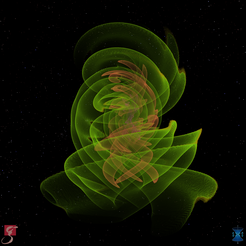Hints of extra dimensions in gravitational waves?
Researchers from the Max Planck Institute for Gravitational Physics (Albert Einstein Institute/AEI) in Potsdam found that hidden dimensions – as predicted by string theory – could influence gravitational waves. In a recently published paper they study the consequences of extra dimensions on these ripples in space-time, and predict whether their effects could be detected.
LIGO’s first detection of gravitational waves from a black-hole binary in September 2015 has opened a new window onto the universe. Now it looks like with this new observing tool physicists cannot only trace black holes and other exotic astrophysical objects but also understand gravity itself. “Compared to the other fundamental forces like, e.g. electromagnetism, gravity is extremely weak,” explains Dr. David Andriot, one of the authors of the study. The reason for this weakness could be that gravity interacts with more than the three dimensions in space and one dimension in time that are part of our everyday experience.
Extra dimensions

Extra dimensions that are hidden because they are very small are an indispensable part of string theory – one of the promising candidates for a theory of quantum gravity. A theory of quantum gravity, unifying quantum mechanics and general relativity, is sought after in order to understand what happens when very large masses at very small distances are involved, e.g. inside a black hole or at the Big Bang.
“Physicists have been looking for extra dimensions at the Large Hadron Collider at CERN but up to now this search has yielded no results,” says Dr. Gustavo Lucena Gómez, the second author of the paper. “But gravitational wave detectors might be able to provide experimental evidence.”
The researchers discovered that extra dimensions should have two different effects on gravitational waves: they would modify the “standard” gravitational waves and would cause additional waves at high frequencies above 1000 Hz. However, the observation of the latter is unlikely since the existing ground-based gravitational wave detectors are not sensitive enough at high frequencies.
On the other hand, the effect that extra dimensions can make a difference in how “standard” gravitational waves stretch and shrink space-time might be easier to detect by making use of more than one detector. Since the Virgo detector will join the two LIGO detectors for the next observing run this might happen after late 2018/beginning of 2019.












